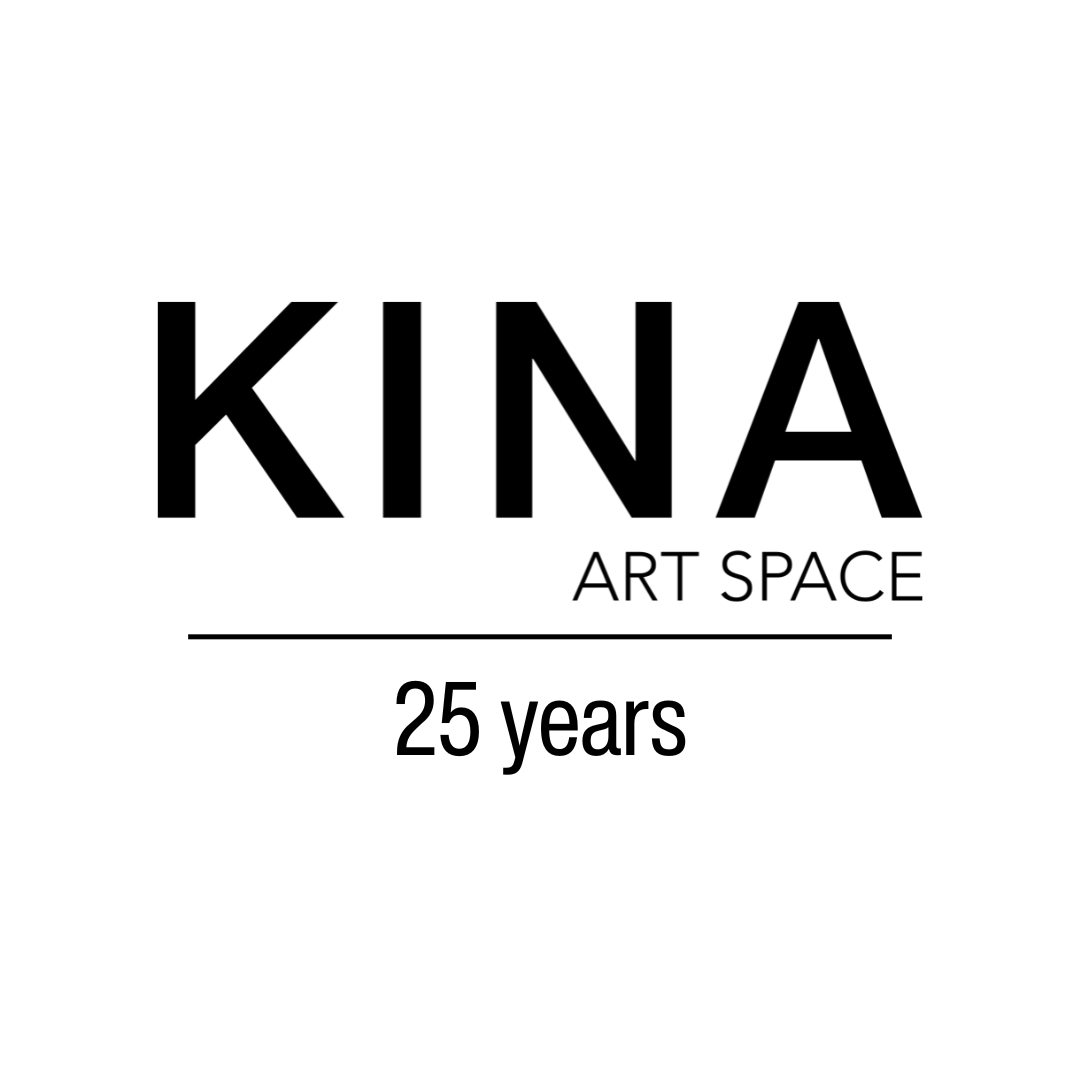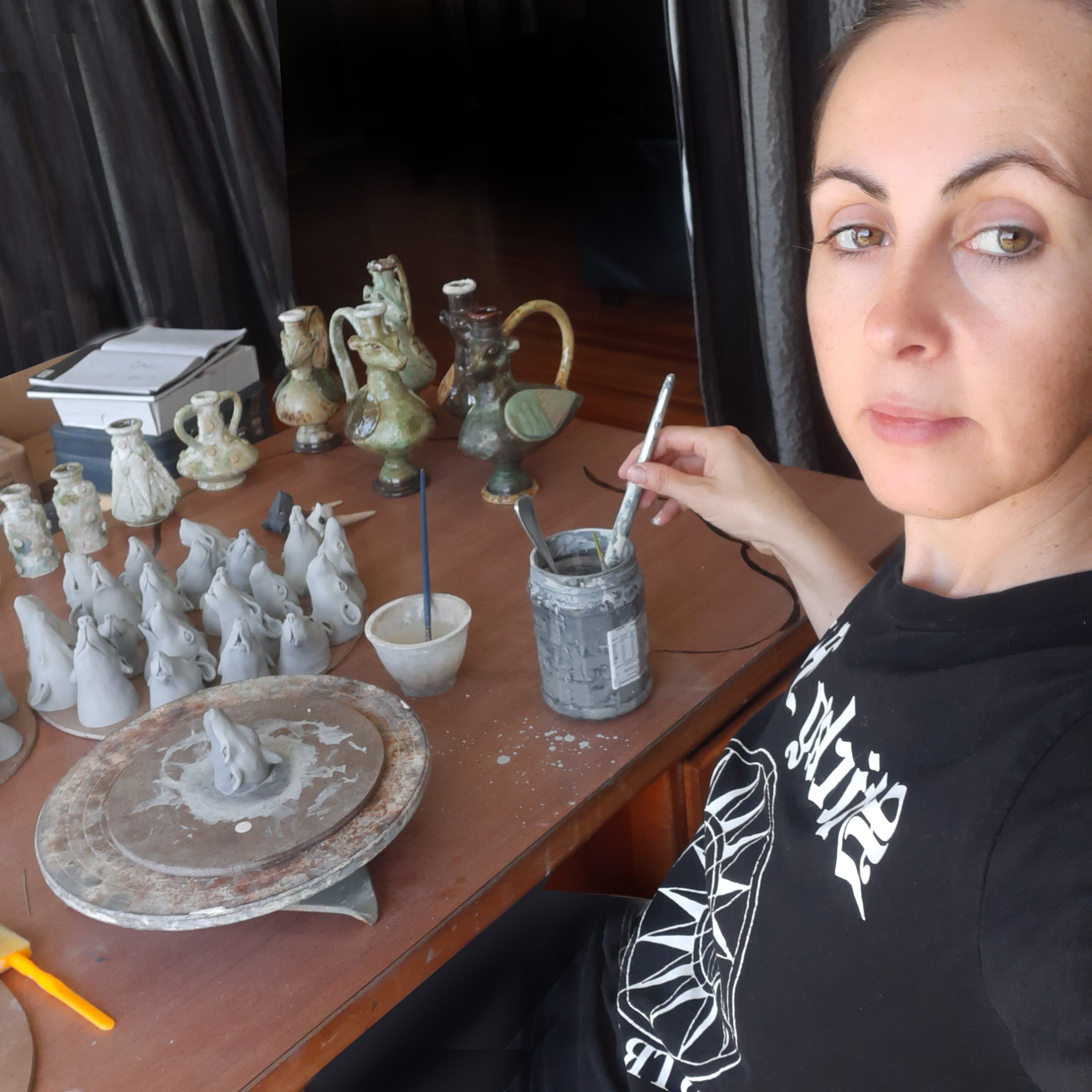
Nestled under the shadow of Paritutu Rock, the Rangimarie Māori Arts & Crafts Centre sits alongside Te Kupenga Stone Sculpture Society and the Lapidary Club on Centennial Drive in Motorua. We remove our shoes and enter the cool and quiet hall. The walls are lined with Māori arts and crafts spanning nearly five decades. A legacy of traditional flax weaving and bone, wood and stone carvings displayed in cases and on shelves. The community space resonates with its intention to inspire learning, to create and to listen.

We are here to visit two Māori artists from Toi Tū O Taranaki (Taranaki Māori Arts Network) devoted to telling traditional Māori stories through their contemporary arts practice. Haoro Hond (Taranaki, Ngā Ruahinerangi, Te Āti Awa, Ngai Tāmanuhiri) and Barry Te Whatu (Taranaki Tūturu, Ngā Puhi) are exhibiting their Puanga exhibition at Kina Gallery this July.

At the end of the hall, Barry sits at a large worktable plaiting fine cordage for his adornment pieces. He shows us tiny works in progress discussing each of the different stones, partially cut and marked with designs. Barry begins to talk about the vision of Toi Tū O Taranaki and about Rangimarie. Clearly, these organisations understand that art has the ability to cross boundaries, to inform and connect through visual and cultural languages.

The Puanga exhibition is interwoven with these fundamental principles. Rather than a typical artist talk, Haoro expresses a desire to share the exhibition through school visits to the gallery, emphasising the importance of passing down knowledge to the younger generations. We talk about the exhibition opening night, about protocol and the Whakatau that will lay the foundations for the evening.

Drawing on their own unique talents as Māori artists and storytellers, the pair chat about their collaborative process. The give and take between the men represents everything they are individually expressing – one speaks, the other listens, quietly nodding in agreement. The show concept Puanga is based on the part of the Orion constellation that feature significantly in the Taranaki sky just prior to Matariki marking the beginning of the Māori New Year. It is a time of celebration and cultivation for Māori people signifying harvesting, planting and wellbeing throughout Taranaki. The idea of wellbeing, positivity and growth is expressed by both men equally.

Looking at the three large vibrant paintings leaning against the woven tukutuku panels, Haoro explains that the predominant colours refer directly to the story he is telling about Puanga. Dawn, when Puanga is clearly visible is illustrated in warm radiating colours. But the works are also strongly characterised by green (symbolising death and loss), red (blood and whenua /land) and the pale blue (Rangi – the sky Father. He continues, “For the families grieving it is also a time to put aside their painful loss, to start again and flourish with their communities, to grow again for the New Year bringing high hopes and dreams of potential for all. Unifying the traditions of old and new so they may merge and evolve.”

Both Haoro and Barry talk about the gifts they have received in making their work – wooden carved panels and stones; important connections with people and place. Toward the end of the visit, Haoro places a perfectly carved disc of black granite on the table in front of us. At it’s centre is the unmistakable graphic clarity of Haoro’s imagery. Lines in stone, lines etched in colour. Story lines. It’s stunningly beautiful and unlike anything I’d seen before.

This is the collaboration, and the vision of two talented individuals making careful and considered artwork under the vast umbrella of their cultural heritage. We leave Rangimarie feeling privileged to have been there listening to these stories, in this place, glimpsing the works and the people who have made them.
Content: Tabatha Forbes





